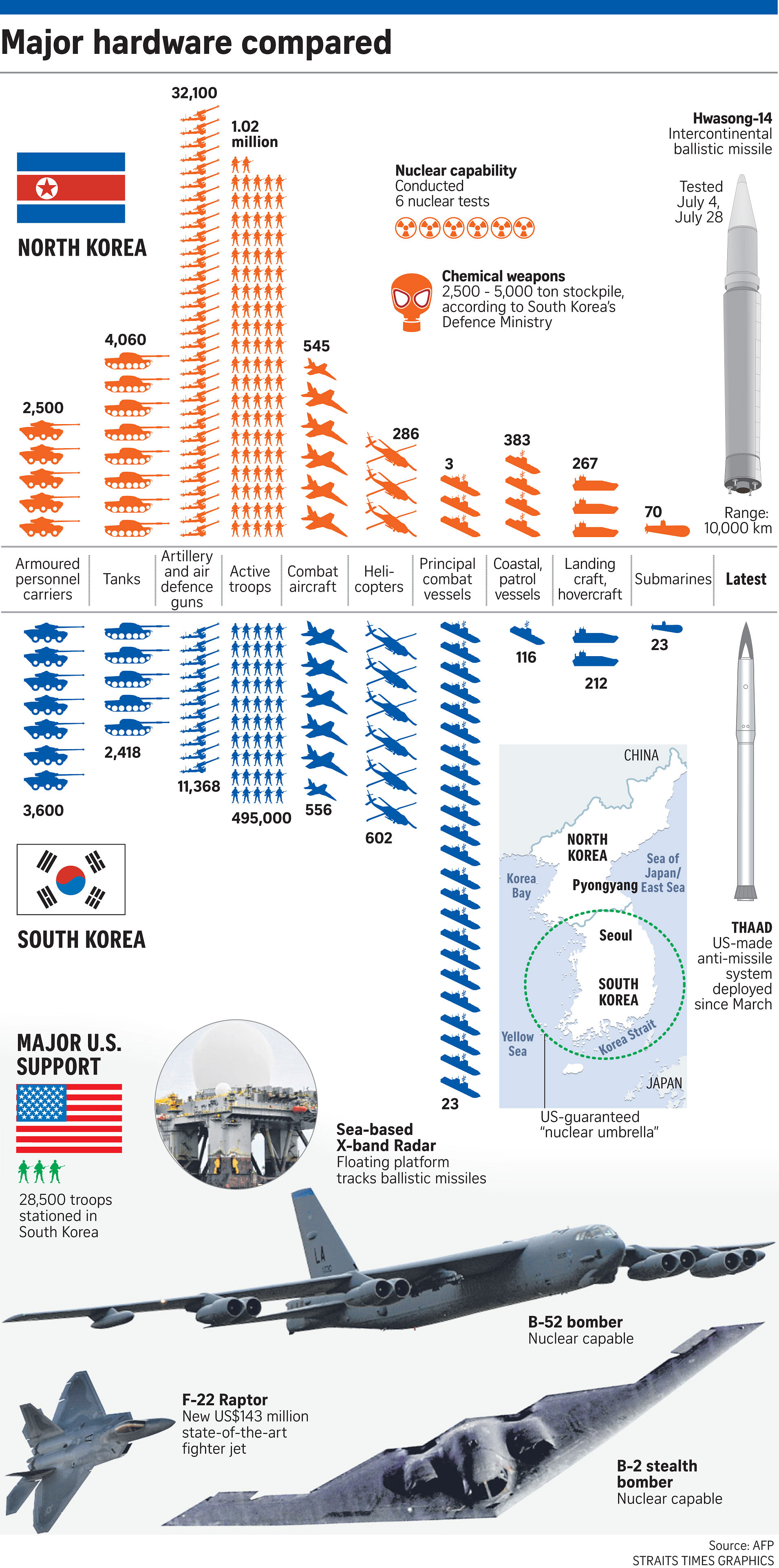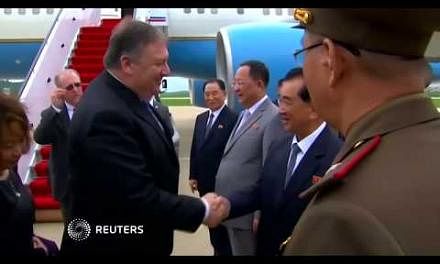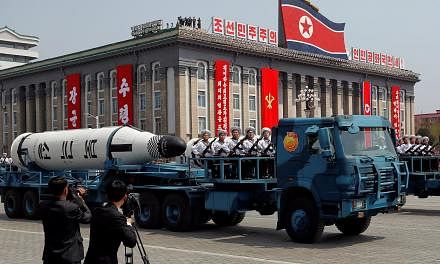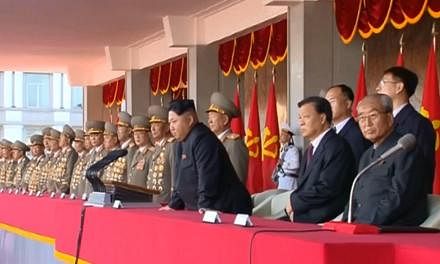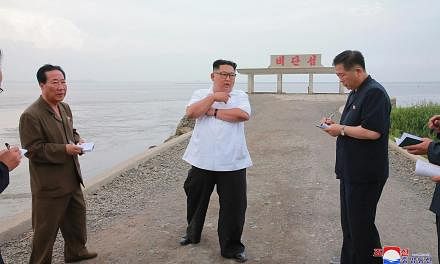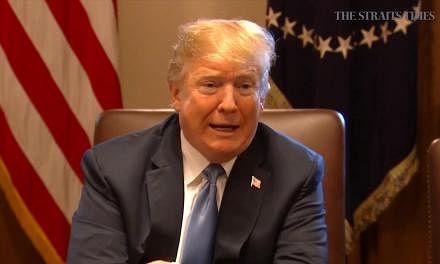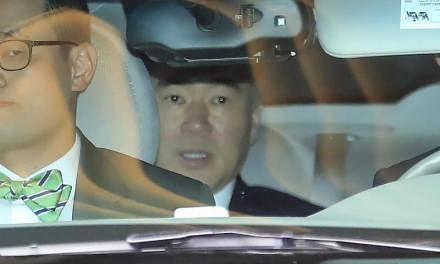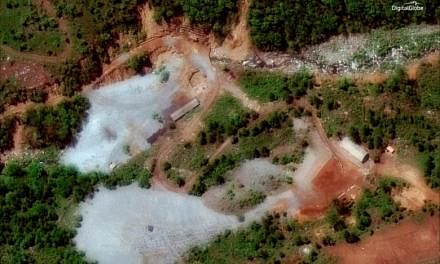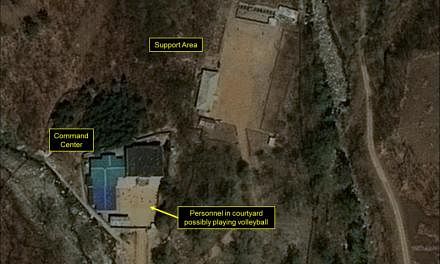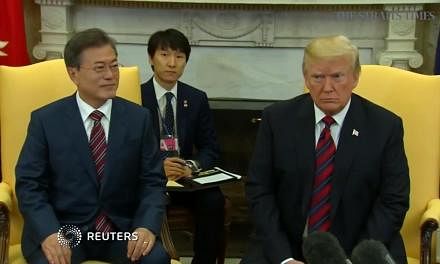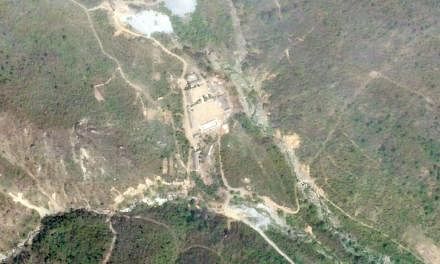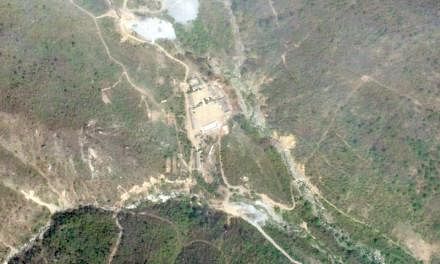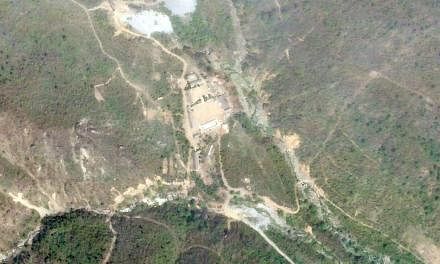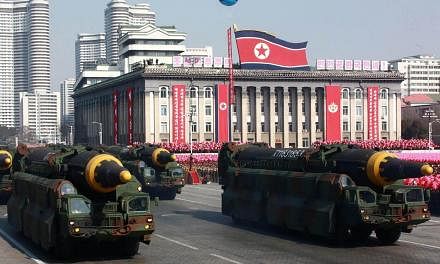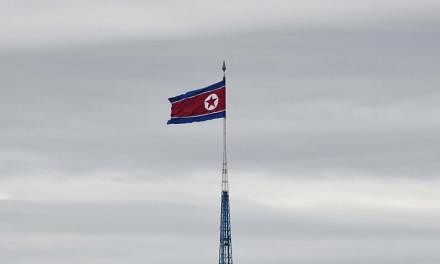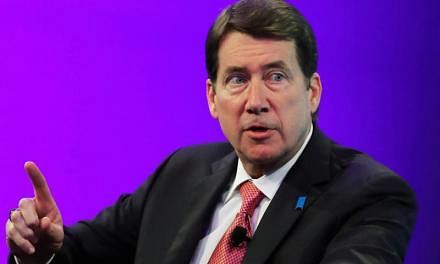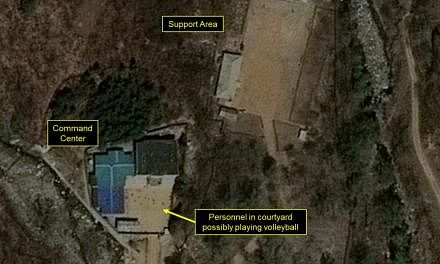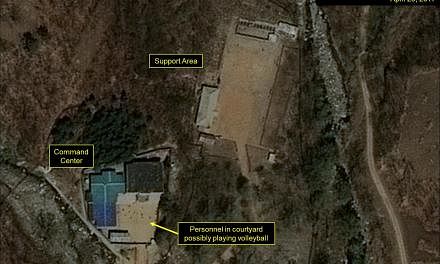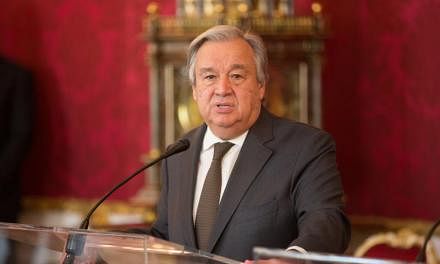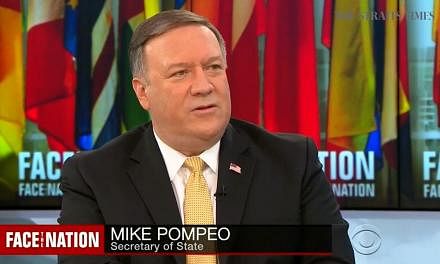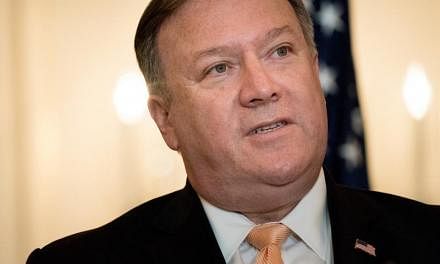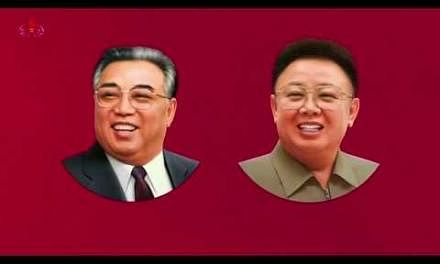North Korea has moved warplanes and bolstered defences along its east coast in an apparent delayed response after American warplanes flew close to the area at the weekend, according to the South's intelligence agency.
Saturday night's show of force by US B1-B bombers and fighter jets did not elicit an immediate response from the North as the regime's radars failed to detect the flights, the agency told a parliamentary intelligence committee yesterday.
Mr Lee Cheol Woo, head of the committee, told reporters North Korea "took no action" even though the warplanes flew the closest to the Korean peninsula that they had ever done. This sparked speculation that a power shortage could have rendered the radars useless.
The move triggered a tirade from North Korean Foreign Minister Ri Yong Ho, who on Monday accused US President Donald Trump of declaring war, and threatened to shoot down US planes "even if they do not breach our airspace".
Apart from strengthening defences, the North ordered its military to "report first" before taking any action, and to be cautious not to trigger any accidental clashes along the border, said Mr Lee, citing the agency.
Political commentator David Lee told The Straits Times that the North's aircraft were redeployed to the east because "US forces cannot infiltrate North Korea from the west as there is a danger of violating China's airspace".
Concerns that a military conflict could erupt on the Korean peninsula have grown since Mr Trump and North Korean leader Kim Jong Un engaged in a bellicose war of words and threatened to destroy each other's country.
Mr Trump's warning on Sunday that North Korea "won't be around much longer" led Mr Ri to accuse the US of declaring war and insist his country had "the right to shoot down US bombers" even if they were outside the North's airspace. The White House dismissed Mr Ri's accusations as "absurd".
South Korean officials, playing down security concerns, gave the assurance yesterday that next year's Winter Olympics in Pyeongchang would be safe. This came after countries like France and Austria raised the possibility that they would not be sending their athletes to the Games in February.
South Korean President Moon Jae In yesterday urged the North to resume military talks with the South so as to ease tensions.
Mr Moon, who is scheduled to meet the leaders of various political parties today to discuss the country's security challenges, added: "The door to dialogue is always open if North Korea stops making reckless choices."
China and Russia, two of North Korea's biggest allies, also called for restraint.
Beijing warned that there would be no winners in a conflict, while Moscow reminded all about the "catastrophic consequences".
Military analysts, referring to North Korea's threat to take down US warplanes in international airspace, said the Kim regime has the missile wherewithal to back up its warning.
Its weapon is the KN-06, a domestically developed surface-to-air missile system that was first seen in a military parade in 2010.
Security scholars estimate that the KN-06 has a range of about 145km, The Wall Street Journal reported yesterday.
"Clearly these missiles can fly out into international airspace off the east coast of the peninsula, although it must be pointed out that patrolling in international airspace is not a breach of any laws," said Mr Lance Gatling, a defence analyst and president of Tokyo-based Nexial Research, the London Telegraph reported yesterday.
"Firing a missile at a target in international airspace is an act of war, and would be treated as such," Mr Gatling added.
North Korea has fired at American aircraft in the past.
In 1981, it fired a missile at a US reconnaissance plane flying near the inter-Korean border, but missed.
A US helicopter was downed in 1994, killing one of the pilots, after it crossed into North Korean airspace.
"Considering past history, the US has to take the threat of an interception very seriously," said Dr Daniel Pinkston, a North Korea expert at Troy University in Seoul.
